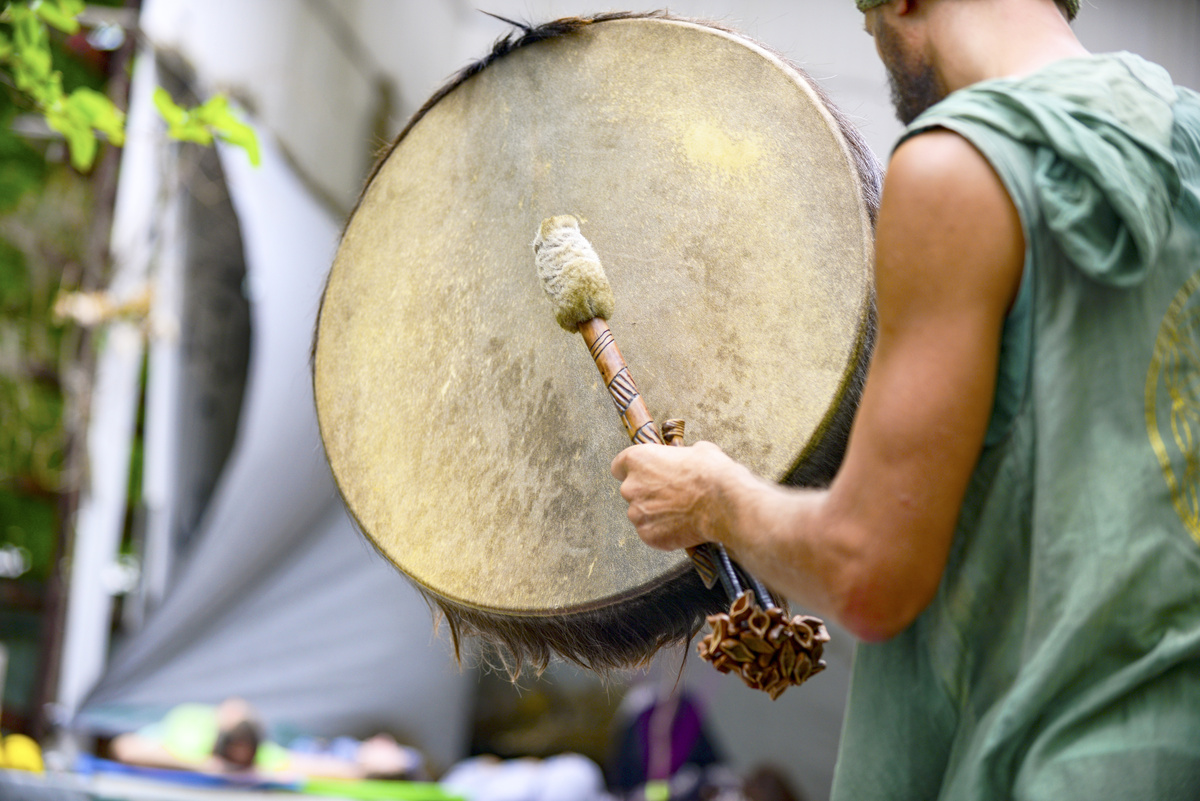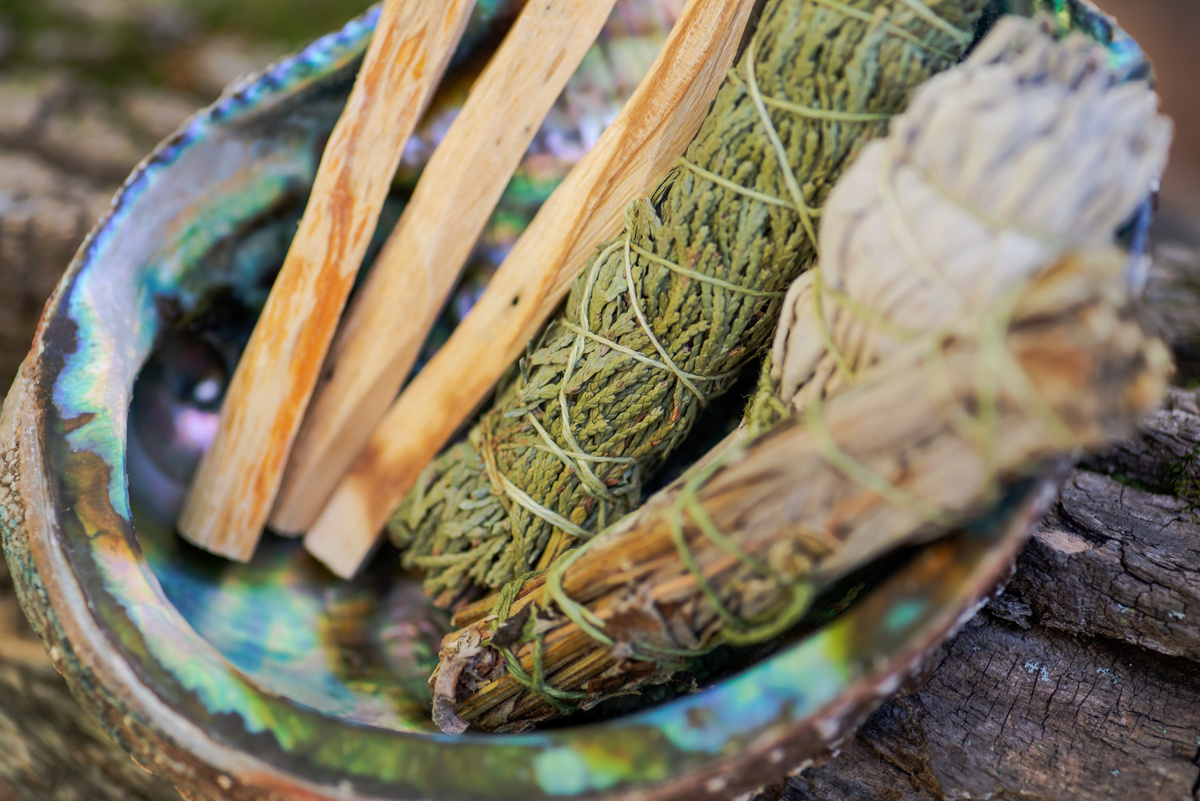Table of contents
What is shamanism?

Shamanism cultivates ancestral beliefs with the intention of connecting with the spiritual world. In this sense, practices are performed with healing purposes, facilitating the understanding of various aspects of collective and individual life, as well as offering well-being and plenitude.
From this perspective, the shaman is able to move between the natural and the spiritual world to bring clarity, prophecy and healing to this dimension. Thus, shamanism is a way of leading life with more balance and respect for nature, always moving in the direction of self-knowledge.
Shamanism enables transformation and healing of the soul through rituals, sacred instruments and connection with nature. Want to know more? Check below everything you need to know about shamanism, its origin, history, rituals and more!
Understanding Shamanism

Shamanism has existed for thousands of years and is linked to healing through power plants, nature preservation and even the arts. Check below for more information on the etymology of the word shaman, the history of shamanism and more.
Etymology of the word Shaman
The word Shaman originated in the Tungusic languages of Siberia, meaning "one who sees in the dark. The Shaman is a priest of Shamanism, who is able to connect with spirits, promote healing and conceive divinations.
Therefore, during the rituals, the shamans reach states of consciousness that bring answers and solutions to this plane. To be a shaman it is necessary to have wisdom and harmony. In Brazil, the "pajé" has a similar meaning to the shaman, but it is not possible to say that they are the same thing.
History of Shamanism
Shamanism has existed since the Paleolithic period, but the exact location of its appearance is unknown, but it is a fact that this tradition has left traces in several religions and localities.
There is evidence of cave paintings linked to shamanism, in addition to sculptures and musical instruments, so it is believed that shamans were the precursors of the visual arts, music and lyric poetry.
Nature and Shamanism
Shamanism is intimately connected to nature, promoting the reconnection of the human being with the essence through the elements such as fire, earth, water and air, and promoting spiritual, physical and material healing. They also believe that everything is connected, therefore, they value the preservation of nature.
Besides contact with exterior nature, shamanism is also connected to interior nature. In this way, one becomes conscious of the particularities existing in oneself, as well as understanding that one is part of something greater, the whole.
Shamanism in North America
Coming from Siberia, some groups occupied North America. They were nomadic and migrated to different regions when the hunting season diminished. Besides, they were tribes organized in linguistic families, that is, they had the same origin.
In this sense, they divided themselves into tribes and clans and their religiosity was influenced by the climate as well as by how they got their food. Therefore, they believed that spirits were guiding their activities. In this way, life as a whole was seen as sacred.
Shamanism in Brazil
In Brazil, the pajé has a similar function to the shaman, but as there are cultural variations, it is not possible to equate the functions and terms. Moreover, characteristic instruments of the country are used for spiritual and healing practices, such as the Maraca, as well as therapeutic practices with the use of plants, massages, fasting, among others.
In addition, chants, dances and instruments are used to communicate with ancestral entities and with one's own essence. Furthermore, the rituals do not take place only in indigenous communities. Currently, shamanism is becoming more and more widespread and has already reached urban centers.
Understanding the rituals of shamanism

Shamanic rituals use entheogens, that is, psychoactive substances that help to reach high states of consciousness and favor the connection with the divine. Learn more about these substances, among other elements used in the rituals.
Herbs and psychoactive substances
Herbs and psychoactive substances are used to evoke spirits, gain clarity about individual and collective processes, and promote healing. These substances are known as entheogens, which means "inner manifestation of the divine.
In this way, through entheogens it is possible to go through an intense process of self-knowledge through altered states of consciousness that promote the understanding of feelings, fears, traumas and other problems.
These are transformative experiences, from which there are reports of people being cured of addictions and psychological problems. This occurs because the rituals promote cleansing, purifying the mind and body, ayahuasca being the most widely used power plant in Brazil.
Power animals
Power animals are also known as totem and spirit animals. They assist in promoting wisdom, self-knowledge and spiritual healing. In this way, by walking alongside a power animal, one can discern the best path to follow.
This makes it easier to identify personality traits, face difficulties and seek solutions. One of the power animals is the bee, which is linked to communication and organization. The eagle promotes clarity, while the spider helps creativity and perseverance, but there are many other power animals with different functions.
Sacred instruments
The sacred instruments are used in rituals and meditations, enabling physical and energetic healing. It is not necessary to follow rules to use these instruments, so it is important to let intuition guide the practice.
The drum is the main power instrument used in shamanism, being responsible for promoting expansion and healing. In addition, the maraca provides energetic cleansing and the headdress enables wisdom and deep connection with the great spirit, but there are many other instruments, always used with the intention of connecting to spiritual practice.
Is the use of psychoactive substances in shamanism illegal?

The use of psychoactive substances in shamanism is not illegal because these substances are not seen as drugs, but as power plants, used for thousands of years to promote healing and connection with the divine.
In addition, the use of these substances for religious purposes, that is, within the rituals, is legalized throughout Brazil. Thus, ayahuasca, the most widely used power plant within shamanism in Brazil, has been legal since 2004.
However, in other countries this same drink is prohibited because it contains DMT, a psychoactive substance still discriminated against around the world. Therefore, shamanism uses entheogens as religious practices and for self-knowledge.

